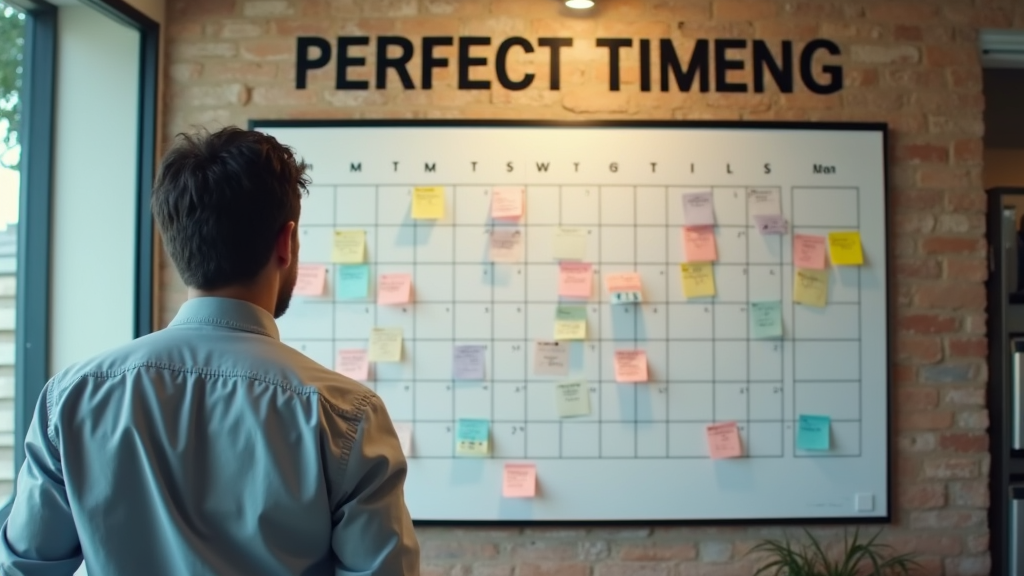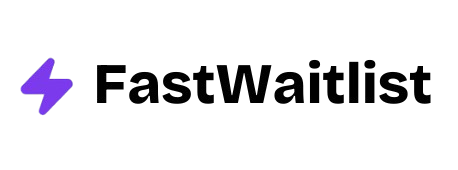
Introduction
Product Hunt can give your tech product an incredible boost in its early days. A well-planned launch on this platform can bring you thousands of potential users, valuable feedback, and media attention. With the right Product Hunt tips, you can make your product visible to an engaged community of early adopters and tech enthusiasts who are actively looking for new solutions.
Getting ready for a Product Hunt launch might feel overwhelming at first. There are many moving parts to coordinate, from picking the right launch date to gathering your support network. But don't worry, you won't have to figure this out alone. We'll guide you through each step of the process to help you create a launch strategy that works. The key is to break down the process into manageable steps and start preparing well in advance.
Product Hunt Launch Fundamentals
Product Hunt is where tech enthusiasts find and share new products. Think of it as a daily leaderboard where your product can gain visibility, feedback, and early users. The community votes on their favorite launches each day, with the most popular ones reaching the top spots.
Your product hunt submission needs to follow specific community guidelines to succeed. You can only launch a product once as its maker, and it must be publicly available when you launch. The community values authenticity, so avoid using multiple accounts to upvote your product or asking for votes in exchange for rewards.
Here are the essential elements you need for a successful launch:
- Product Story: A clear, honest description of what your product does and why you built it
- Visual Assets: High quality screenshots, videos, or GIFs showing your product in action
- Launch Timing: Your product goes live at 12:01 AM PT, so plan your promotion around this time
- Hunter Selection: Choose someone with influence in your product category to hunt your product
- Community Support: Build relationships with the Product Hunt community before your launch day
- Response Plan: Be ready to answer questions and engage with feedback throughout launch day
- Social Proof: Prepare testimonials from early users or beta testers
- Launch Page: Create a dedicated page with special offers for Product Hunt visitors
Pre Launch Strategy
A successful Product Hunt launch needs careful planning. Most successful launches start their preparation at least 3 weeks before the big day. This gives you enough time to build momentum and fix any issues that might come up.
Here are the key preparation tasks you need to handle:
- Product Assets: Create eye catching screenshots, GIFs, and a video demo that shows your product in action
- Launch Copy: Write clear product descriptions, FAQs, and first comment
- Team Preparation: Get your team ready to answer questions and engage with hunters
- Analytics Setup: Add tracking to measure traffic and conversions from Product Hunt
- Hunter Research: Find and connect with a hunter who matches your product category
Your Product Hunt strategy should include building genuine connections within the community before launch day. Start by following other makers, leaving thoughtful comments on products similar to yours, and sharing your expertise. This helps you understand what the community values and builds relationships that will support your launch. Join relevant discussions and offer helpful insights without promoting your product directly.

Choosing Your Launch Timing
Your launch timing on Product Hunt can significantly affect your success. The platform's community follows certain activity patterns you can use to your advantage.
The best time to post your product is early morning Pacific Time (PT), ideally between 12:01 AM and 1:00 AM PT. This timing lets you catch the full attention of Product Hunt's most active users throughout their day. You'll want your product to be at the top of the daily list when people start checking the site in the morning.
Tuesday through Thursday typically bring the highest engagement rates on Product Hunt. These midweek days see more active users and fewer competing launches. Avoid launching on weekends or holidays when engagement drops significantly. Mondays can be overwhelming with too many launches competing for attention, while Fridays often see lower user activity as people wrap up their work week.
Consider your target audience's location when planning your launch. If you're targeting European users, launching at midnight PT means they'll see your product during their afternoon hours. For Asia Pacific audiences, they'll encounter your launch during their evening. Plan around your primary market's peak activity hours while maintaining that crucial PT timestamp for Product Hunt's daily rankings.
Creating Your Product Hunt Page
Your Product Hunt page needs to grab attention in seconds. A strong page convinces visitors to upvote your product and try it out right away.
Write a tagline that quickly shows what your product does and why it matters. Focus on the main problem you solve or the key benefit users get. Your description should build on this by explaining your product's features and advantages in clear, simple terms. Remember to highlight what makes your product unique without using complex jargon.
Visual content can make or break your launch success. Your thumbnail should be simple and eye-catching, working well at different sizes. Create high-quality screenshots that show your product in action. Include real interface examples rather than mockups to build trust with potential users.
Here are the essential elements for your Product Hunt page:
- Thumbnail Image: Square format, 240x240 pixels with your logo or icon
- Gallery Images: 4 to 6 clear screenshots showing main features
- Video Demo: 1 to 2 minute walkthrough of core functionality
- First Comment: Introduction about your product's story, development journey, and future plans
- Maker Notes: Brief explanation of what inspired you to create this product
- Links: Working links to your website, social media, and documentation
Hunter Selection Strategy
Choosing the right hunter for your Product Hunt launch can significantly influence your success. You can either hunt your product yourself or partner with an experienced hunter. Each option has its own benefits and limitations.
Self-hunting gives you complete control over your launch timing and messaging. You'll handle every aspect of the launch process and keep direct contact with your audience. However, you might miss out on the valuable experience and audience reach that established hunters bring to the table.
Working with a Product Hunt hunter requires careful preparation. Look for hunters who have launched products similar to yours or who show genuine interest in your industry. The best way to connect is through a personalized message that shows you understand their past launches and explains why your product might interest them. Remember to reach out at least two weeks before your planned launch date.
Building authentic relationships with hunters goes beyond just asking for help with your launch. Follow their work, engage with their social media posts, and provide value before requesting their support. Share thoughtful feedback on their previous launches or offer insights about your industry. This approach helps create genuine connections that can benefit both parties long after your Product Hunt launch.

Launch Day Execution
Your first hour on Product Hunt will set the tone for your entire launch. Start by checking that your product page is live and all links work correctly. Get your team online and ready to respond to questions. Share your launch link with your supporters right away so they can start upvoting and commenting.
Here's what you need to focus on throughout launch day:
- Monitor Performance: Keep track of your ranking and engagement metrics
- Reply to Comments: Answer every comment within 15 minutes
- Share Updates: Post 2 to 3 product updates showing new features or responding to feedback
- Engage Users: Thank hunters who upvote and share your product
- Track Competitors: Watch other products launching on the same day
- Share on Social: Post your Product Hunt link on your social media channels
- Document Progress: Take screenshots of important moments and milestones
Coordinate with your team using a shared communication channel like Slack. Assign specific roles to team members: one person handling technical questions, another managing social media, and someone tracking metrics. Take shifts if needed to maintain energy levels and quick response times. Remember to celebrate small wins with your team throughout the day to keep motivation high.
Community Engagement Tactics
Building genuine connections with the Product Hunt community starts well before your launch day. You'll want to become an active member by upvoting products you like and leaving thoughtful comments on other launches. This helps you understand the community's values and builds your credibility as a contributor.
Responding to feedback during your launch requires a balanced approach. Stay professional and thank users for their input, even if it's critical. Quick responses show you're present and engaged, but take time to think through your answers. If someone points out a bug or issue, acknowledge it and share your plan to fix it rather than becoming defensive.
Here are the key guidelines for interacting with the Product Hunt community:
-
Do: Respond promptly to comments and questions
-
Do: Share your product's story and development journey
-
Do: Thank hunters and supporters personally
-
Do: Address concerns with specific solutions
-
Do: Be authentic in your communication
-
Don't: Spam the comments section with promotional messages
-
Don't: Argue with critics or negative feedback
-
Don't: Ask directly for upvotes
-
Don't: Ignore technical questions
-
Don't: Post fake reviews or use multiple accounts
Promotion Strategy
Getting the word out about your Product Hunt launch requires careful planning and genuine community engagement. Your promotion strategy should focus on building authentic connections rather than aggressive marketing tactics.
Here are the most effective promotion channels to consider:
- Email List: Send a series of emails to your subscribers announcing the launch date and explaining what makes your product special
- Social Media: Share progress updates and behind-the-scenes content on Twitter and LinkedIn leading up to the launch
- Professional Networks: Let your industry connections know about the upcoming launch through personal messages
- Online Communities: Join relevant Slack channels, Discord servers, and forums where your target users gather
Your promotion efforts can backfire if you use pushy tactics or spam communities. Avoid asking for upvotes directly, posting in unrelated groups, or sending mass messages to strangers. These actions often lead to negative reactions and can harm your launch performance.
Building anticipation before launch day helps create momentum for success. FastWaitlist helps you collect email addresses from interested users and keep them updated about your launch progress. This way, you'll have an engaged audience ready to support your product when it goes live on Product Hunt.
Post Launch Activities
Your Product Hunt launch day is just the beginning of your product's journey. The next 48 hours are crucial for building on your initial momentum and turning that buzz into lasting success.
Here's what you should focus on after launch:
- Track engagement: Monitor comments, upvotes, and social media mentions in real time
- Answer questions: Stay active in your Product Hunt comment section and social channels
- Share updates: Keep supporters informed about milestone achievements
- Document feedback: Save user suggestions and feature requests for future development
- Collect social proof: Ask happy users to share their experience with your product
The days following your launch give you valuable insights into your market position. Look at your Product Hunt ranking and compare it with similar products in your category. Pay attention to which features got the most attention and what questions kept coming up. This information helps you understand what users value most about your product.
A successful Product Hunt launch creates ripples beyond the platform itself. Reach out to tech journalists who might be interested in your product's performance, connect with influencers who showed interest, and consider writing a launch retrospective to share your experience with the community. These activities help extend your product's visibility well beyond the launch period.
Common Launch Mistakes
Launching on Product Hunt can be exciting, but simple mistakes could affect your success. Many founders rush their launch without proper planning, which often leads to missed opportunities and lower engagement.
Here are the key mistakes you need to avoid:
- Poor timing: Launching on weekends or holidays when the Product Hunt community is less active
- Missing preparation: Not having your product video, screenshots, and description ready before launch
- Wrong promotion: Asking for upvotes directly or spamming social media with promotional messages
- No hunter lined up: Waiting until the last minute to find a hunter or launching yourself without building relationships
- Weak first impression: Having broken links or incomplete product information on your page
- Limited availability: Not being around to answer questions and engage with the community during launch day
- Overlooking timezone: Forgetting that Product Hunt operates on Pacific Time (PT) for daily rankings
If your launch isn't going as planned, stay calm and focus on what you can control. Keep engaging with comments, share authentic updates about your product, and maintain a positive attitude. Remember, some successful products needed multiple launches before gaining traction. Your response to challenges matters more than the initial performance. Consider collecting feedback and using it to improve your product before planning another launch.
FAQ
Should I launch on Product Hunt during major tech events?
Launching during major tech events can split your audience's attention. While these events bring more tech enthusiasts online, they're usually focused on the event itself. Your product might get lost in the noise of bigger announcements. Consider launching on regular weekdays when your target audience is actively browsing Product Hunt.
How much does it cost to launch on Product Hunt?
Launching on Product Hunt is completely free. You'll need to invest time in preparing your launch materials like screenshots, videos, and product descriptions. Some founders choose to spend money on marketing support or professional launch services, but success on Product Hunt depends more on your product quality and community engagement.
Can I relaunch my product on Product Hunt?
Yes, you can relaunch if you've made significant updates to your product. Product Hunt allows relaunches after 6 months, but only if you've added major new features or completely changed your product. Small updates don't qualify for a relaunch. Make sure your new version offers substantial improvements worth sharing with the community.
How many upvotes do I need to reach #1?
The number of upvotes alone doesn't determine your ranking. Product Hunt uses a complex algorithm that considers engagement, comments, and the quality of interactions. Some products reach #1 with 500 upvotes, while others might need 1000+. Focus on genuine community engagement instead of just collecting upvotes.
What if my launch doesn't perform well?
A quiet launch isn't the end of your product journey. Use the feedback you received to improve your product. Many successful products had modest Product Hunt launches but grew through other channels like SEO, social media, or word of mouth. Consider it a learning experience and keep building relationships within the tech community.
Ready to prepare for your Product Hunt launch? Start building your waitlist with FastWaitlist to gather early supporters.
